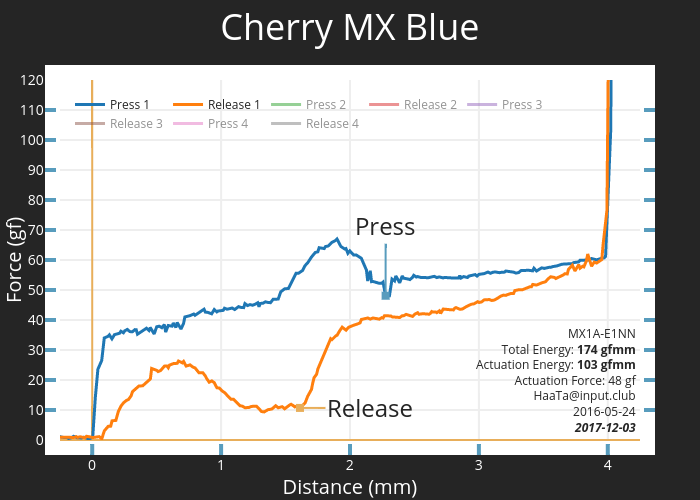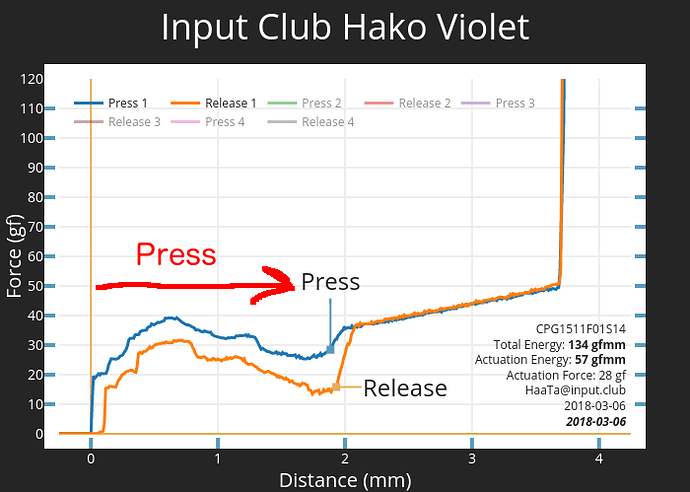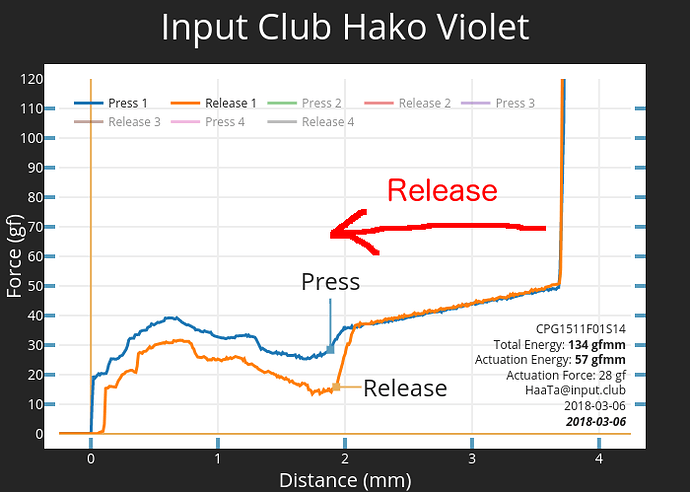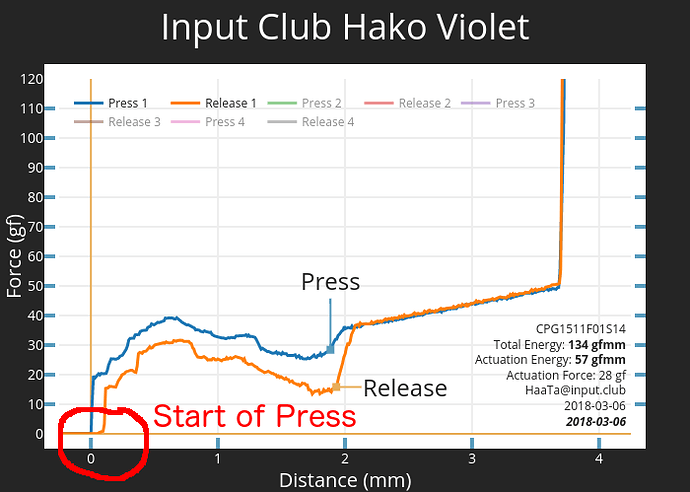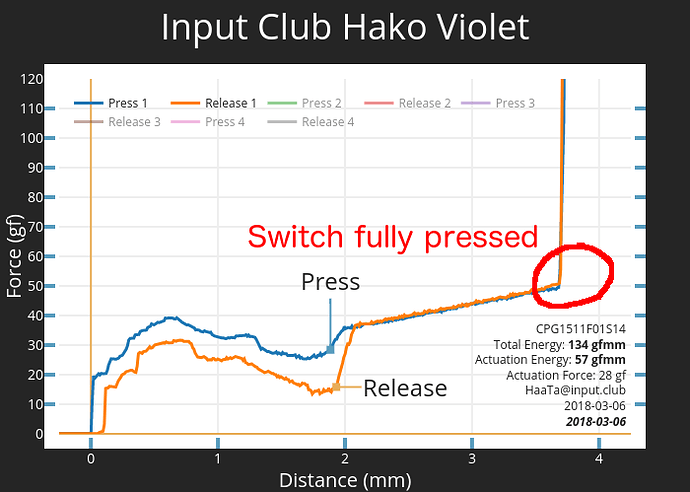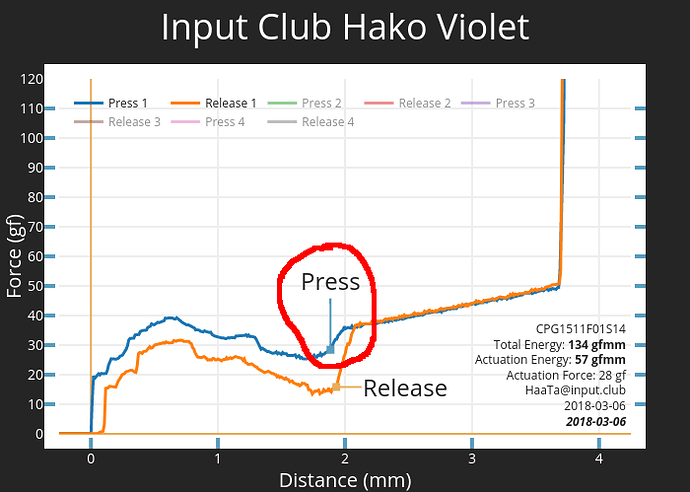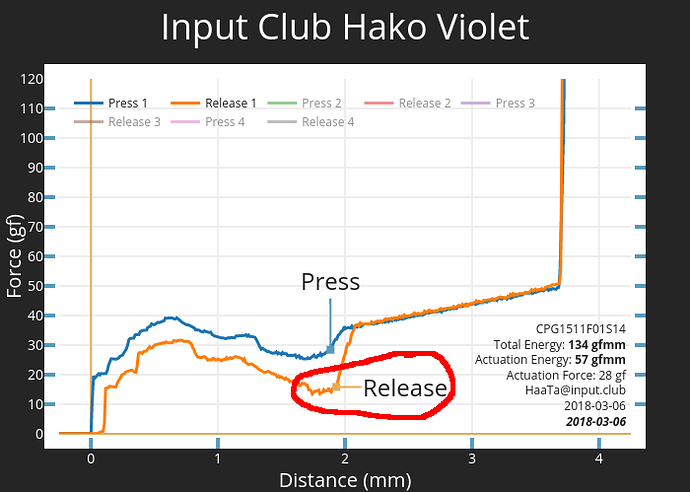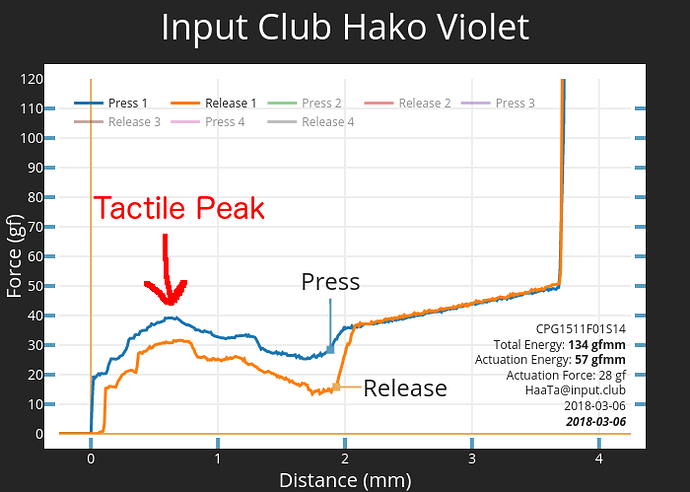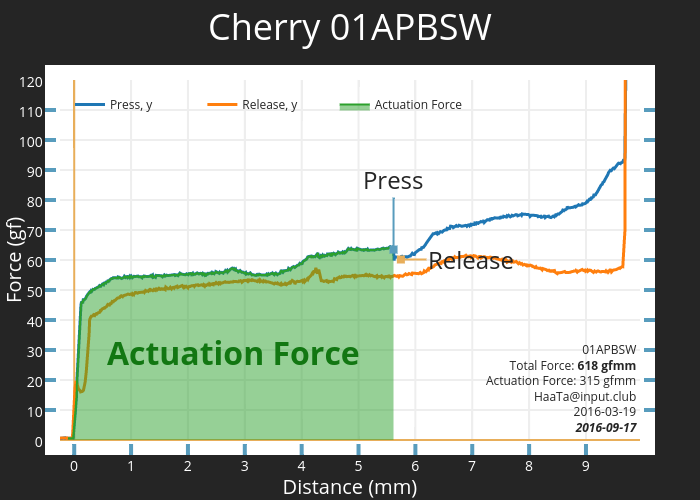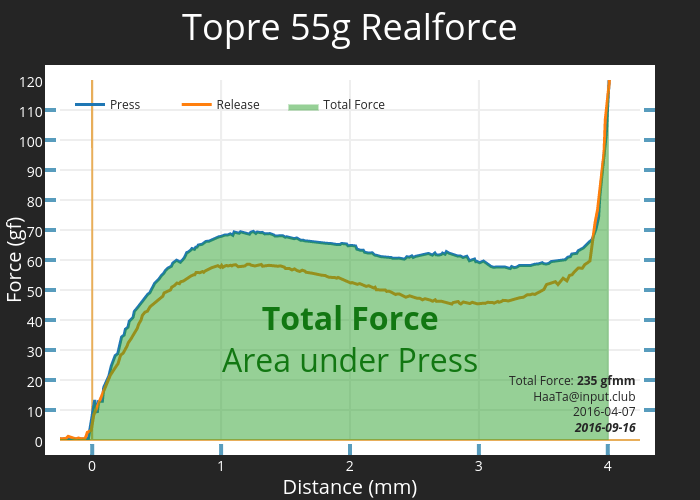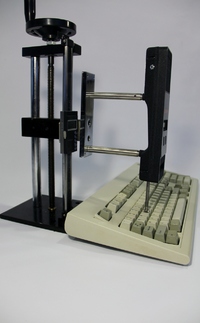When you’re looking at switches, one term that almost always comes up is a force curve.
Why you ask? Well, when read correctly a force curve allows you to visually interpret what a switch will feel like.
But what if you don’t know how to read a force curve? ![]()
For those that don’t know me, I became so obsessed with switches I built my own force curve tester, which I chronicled in The Problem with Mechanical Switch Reviews.
Reading a Force Curve
To read a keypress from a force curve, you read the graph from left to right, and then if there is data for the release it is then read from right to left.
The X-axis (bottom) going from left to right shows how far you have pressed the switch. Starting at 0 mm (switch is not pressed at all) and ending at the maximum travel of the switch (e.g. 4 mm).
At each X position, the Y position represents how much you have to push on the switch at that part of the keypress. So at 0 mm, it makes sense that it takes no effort to press the switch, because you’re not pressing it (hah). At the end of the press (bottoming out the switch) the force will sharply increase.
In the case of a Hako Violet Switch there are 3 other notable force/distance positions on the graph.
- Activation force/distance (when the switch turns on)
- Deactivation force/distance (when the switch turns off)
- Tactile peak (highest force of the tactile bump)
Bottom-out Force vs. Actuation Force
When someone mentions a switch is 45 gf, what do they actually mean? Is it bottom out? Is it actuation? Is it at the tactile bump?
The truth of the matter, they probably don’t know either, lol (or at least misinformed).
Instead, you should be talking about how much work it was to press the switch
(using force to talk about how heavy switches are is perfectly ok, just remember to specify what you’re talking about ![]() ).
).
Force vs. Work
Work is just force x distance, or more easily visualized, the area under the force curve (Total Force is the sum of all the force, which is the same as Work).
For convenience I calculate the work (gfmm, also known as joules) for each switch I measure. And if I have the press/release data, I also measure the actuation work as well.
Conclusion
When talking about how heavy a switch feels, be specific!
- X switch bottoms out at 55 gf.
- Y switch activates at 40 gf.
- Z switch takes 57 gfmm to activate.
- W switches uses 68 gf springs (this is ok, but we should specify the length of the spring as well…).
And don’t do…
- Q switch is 80 g. (Does Q weigh 80 g!?)
- Hako True switches use a 95 gf spring. (Yes it does, but the spring is also 12.3 mm long, vs. 14.5 mm in typical Box switches)
- Use g (weight) when you actually mean gf (force). g can mean weight of the object, while gf is always about applying force.
I hope this guide was useful, please feel free to add any suggestions or comments. I’m always trying to improve how I explain switches ![]()
